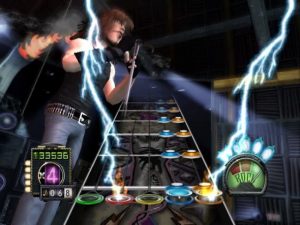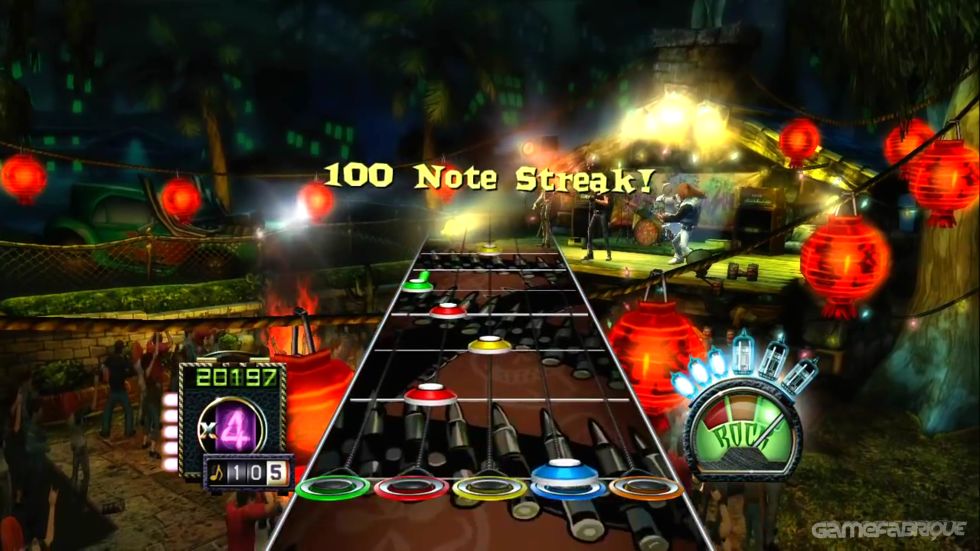
Or, for whatever reason, you can use the keyboard to play, but in limited testing, I can say without surprise that the experience is dampened. A note about controls: you’re going to want to use the guitar of course, and you can start to use it immediately to navigate the menus. Once completed, I fired up the game from the Start Menu and I was at the game menu in no time.

The installation from the DVD, which by the way is a hybrid disc – meaning that it can be used in either a Mac or a Windows machine – is only about 4.3GB, so it doesn’t take long at all to install. That said, installation couldn’t have been easier, simply plug in the USB cord, Windows (I am still using XP), recognized it, and within ten seconds it was installed and ready for use. This guitar is known as the X-Plorer, and it does well, but it’s not quite as ergonomic as the Guitar Hero 3 guitar for the consoles. One of my first concerns was the guitar was it wireless like the most recent models for PS3 and Xbox 360? Turns out it’s not, and in fact it’s the exact same guitar that came out with Guitar Hero 2 on the Xbox 360, right down to the 360 Globe button. I wasn’t entirely sure what to expect with the PC version, but the port is surprisingly smooth, even on my 2.0GHz AMD X2, 256MB 7900GT, and 1GB of PC3200 RAM. Most of us have at least played one of the versions on at least one of the consoles personally most of my time was spent with Guitar Hero on PS2, and then more recently with Guitar Hero Aerosmith on the PS3.


With games on all major consoles, the PC, and now even the Nintendo DS, and another sequel due out fairly soon, there is no end in sight for this incredibly popular series. Guitar Hero has been an incredibly popular franchise in its short lifespan.


 0 kommentar(er)
0 kommentar(er)
